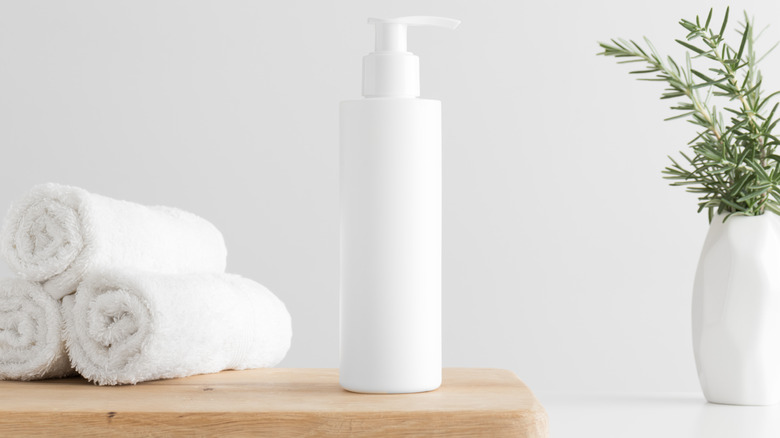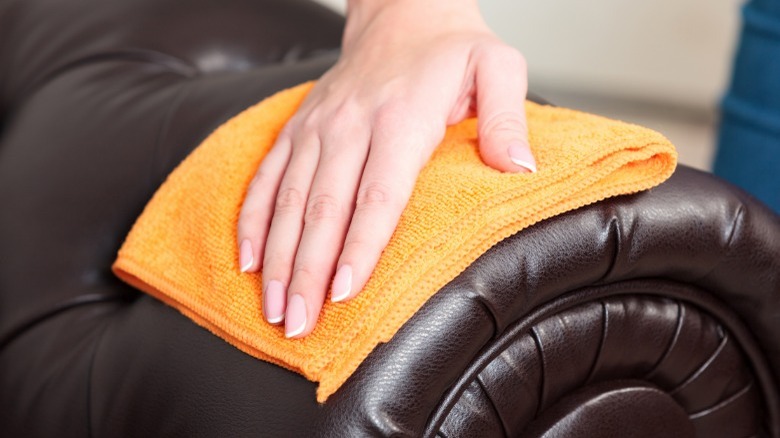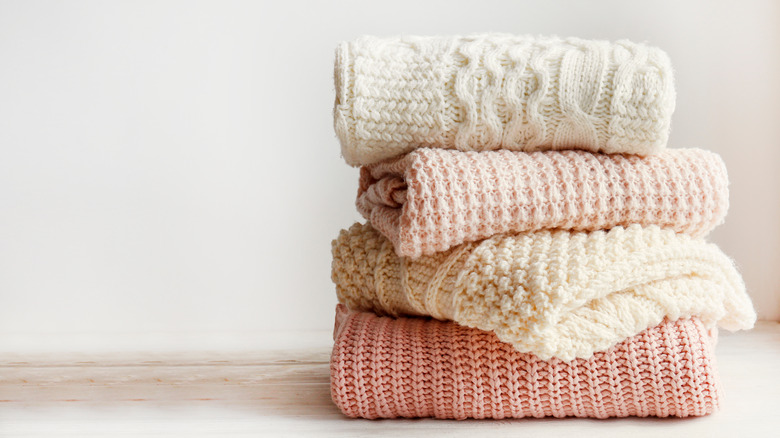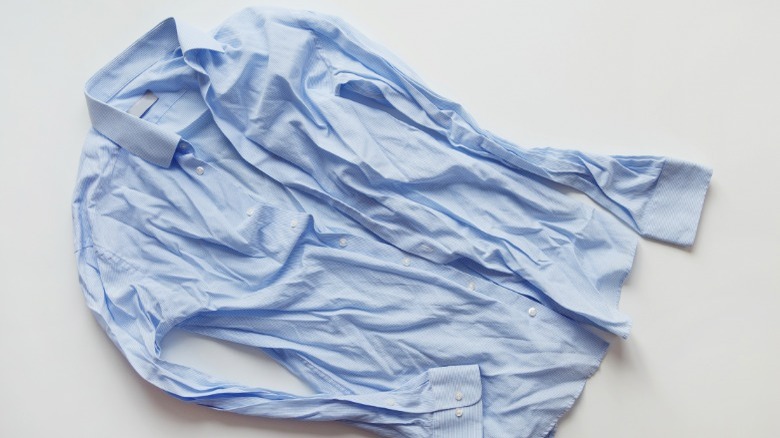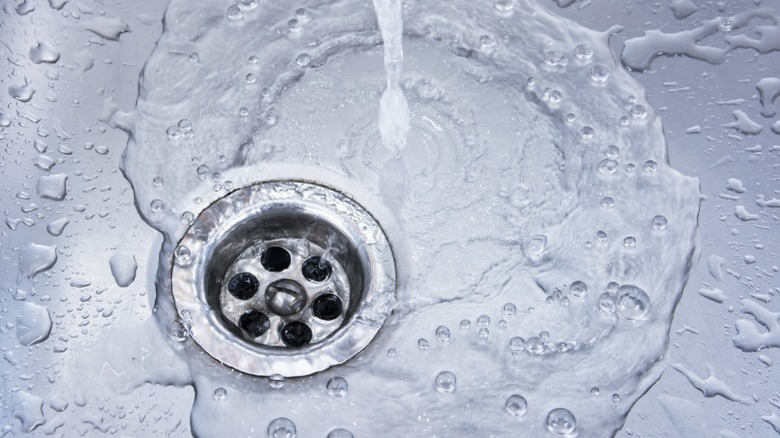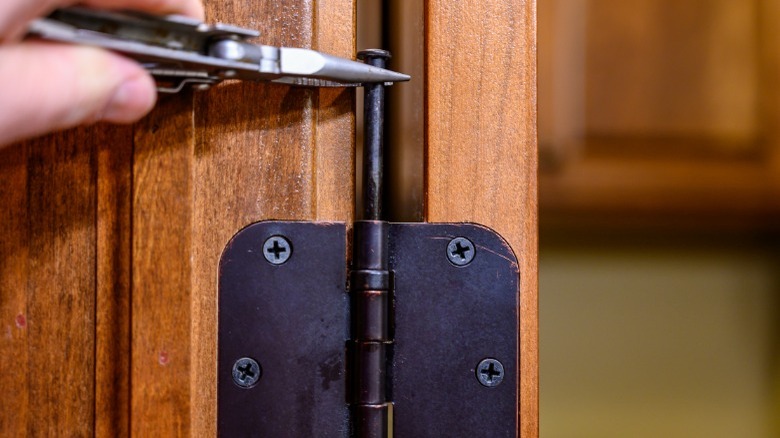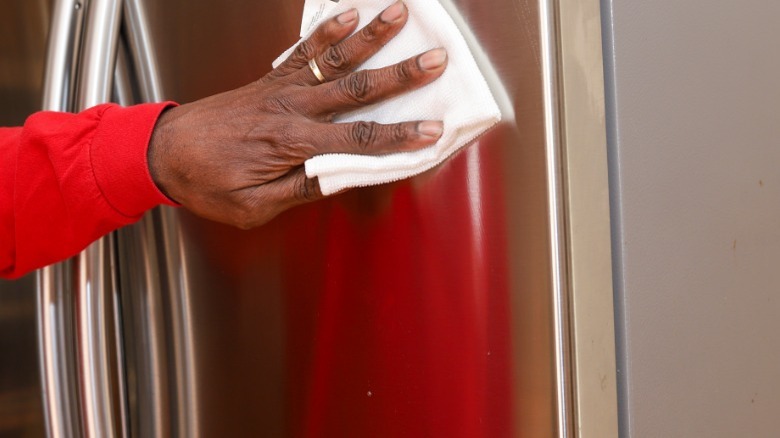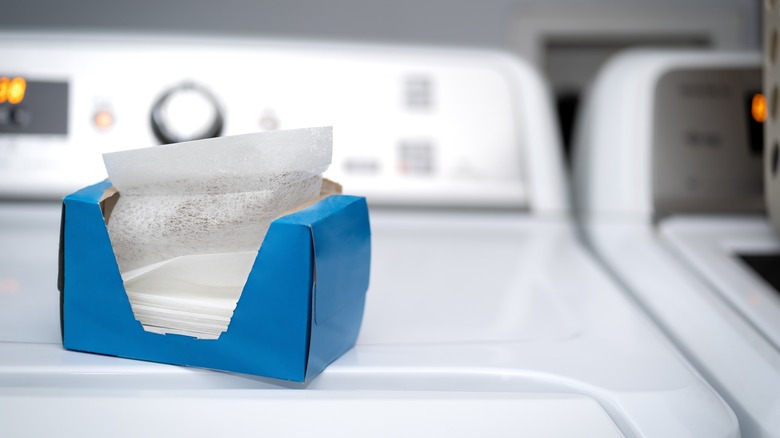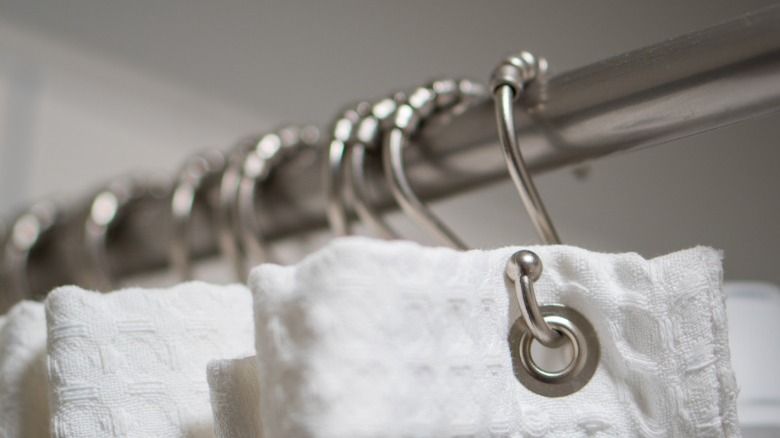Surprising Ways You Can Use Hair Conditioner Around The House
While the average person only uses hair conditioner for its named purpose, it is a versatile product that doesn't need to live in your bathroom. Because of what these products contain, that unassuming bottle of thick liquid can be used in and around your house for many other purposes. You'll find that it comes in quite handy for tasks in your family room, powder room, laundry room, driveway, and elsewhere.
So what exactly are the main ingredients in hair conditioners? One is dimethicone, a silicone-based polymer that creates a barrier for retaining moisture. This is also found in wrinkle-release sprays and helps smooth creases. Hair conditioner also has Ceteth ingredients, which help water break down oil and dirt. This is also commonly found in commercial toilet bowl cleaners. Conditioners also have waxes sourced from petroleum by-products; you can also find these in floor and car waxes.There are many household products that contain the same or similar ingredients, and instead of buying those, why not try hair conditioner instead?
Now that you know more about what's in hair conditioner, it's easier to see how it can work so well for other purposes. This doesn't mean you should take a $45 bottle of conditioner and use it in and around the house. But the less expensive stuff can perform some cool magic tricks in your home. Here's how to use hair conditioner around your house
Protect and condition leather goods
Real leather furniture isn't cheap and can easily get ruined when not taken care of. Hair conditioner does double duty here: It offers protection from the elements and conditions leather. You could buy an expensive waterproofing product, but the Michigan Department of Health & Human Services warns that those sprays can be toxic. It recommends only using these products outdoors and keeping pets away from the area until the products are fully dried. Why mess around with that?
You can apply a thin layer of hair conditioner to clean, dry leather and work it into the surface with a soft, non-abrasive cloth. The waxes in less expensive hair conditioners work especially well for this purpose. And you don't have to worry about damage because ingredients safe for hair are also fine for leather. Doing this regularly will keep the leather moisturized and shiny and protect it from sun damage, too.
Save that shrunken sweater
At some point, almost everyone on the planet has shrunk a beloved sweater and either thrown it out, donated it, or passed it down to someone that it would fit. But unless it's been reduced to doll-size or has unshrinkable symptoms, there may still be some life left in it. The best candidates for upsizing are sweaters that have shrunk down a size or two. If you can pull the fibers out a few inches on all sides, this should work.
To unshrink a sweater (this also works on other clothing), fill up a sink, tub, or bucket with enough lukewarm water to cover it, and add 2 tablespoons of hair conditioner. Add the clothing and press it down until completely submerged. Resist the urge to move it around and let it rest for 20 to 30 minutes. Take it out but don't rinse it in clean water. Instead, place it on a large, clean towel and roll it up to absorb the excess moisture. Place it on another clean towel and gently stretch it back into shape. If you pull too hard, you could damage the seams or make the sweater too wide. Allow it to air dry, but keep it out of the sunlight because that could discolor the fabric.
To prevent clothes from shrinking, read the manufacturer's labels and launder as instructed. The problem is caused by high water temperatures, machine agitators, and using the dryer on items that should only be air-dried. But hey, anyone can make these mistakes, and now you have an option that could very well rescue that pretty blue argyle.
Smooth out wrinkled fabrics
There are people out there who actually like ironing, but there are easier solutions for everyone else. You can pick up a 33.8-ounce bottle of Downy Wrinkle Releaser Spray for $7.97 at Walmart, and it will do the job quickly and effectively. But guess what it contains? Dimethicone. You can make a DIY wrinkle releaser spray that works just as well without all of those added chemicals. All you need is a clean, empty spray bottle, 1 teaspoon of hair conditioner, and 1 tablespoon of plain white vinegar. Add those two ingredients to the bottle and pour 1¾ cups of warm water. Put the top back on and shake it up. How easy was that?
Next, you can put your wrinkled clothes on hangers and hang them up on your shower curtain rod. Spray the clothes until damp but not soaking wet, and gently stretch the fabric until the wrinkles start flattening out. The more your spray, the longer the material will take to dry. You don't need to use that much but spritz and stretch again if it doesn't work the first time. In some cases, heavily wrinkled clothing may need to be relaundered. You can use this amazing spray on fabrics throughout your house — it can wake up tired curtains, bedspreads, and pillows. Add some essential oil, and it'll smell like you used Febreze.
Unclog drains
This one seems to go against logic, but it can work on minor clogs. Drains get backed up by hair, soap, grease, and debris, and sometimes a bit of lubrication is all that's needed. But first, you'll want to remove the drain cover to investigate the extent of the problem. To do this, either pry it off with the end of a screwdriver or unscrew it. These covers are great for preventing clogs, but if you don't clean yours out regularly, you're asking for trouble. Once it's removed, shine a flashlight down the drain, put on rubber gloves, and pull out any hair you see.
Next, get out the hair conditioner and squeeze a small amount down the drain. Don't overdo it, or you could make the clog worse. The goal is to lubricate it just enough and send it on its way. Wait 20 to 30 minutes, and flush out the drain with hot water. If the drain is still backed up, you can try doing it again with the same amount of hair conditioner. Trying it a third time could make the clog worse, and if you don't want to deal with a plumbing problem, it may be time to call a plumber.
Fix annoying, squeaky doors
Many households have at least one container of WD-40, and while it's great for fixing squeaky doors and such, the contents are highly flammable and can cause allergic reactions and discolor door hinges. When the door doesn't have a structural issue that's causing the squeaks, reach for that bottle of hair conditioner.
To get started, check the door and its hinges to see the problem's source. It could be damaged or out of alignment. Rusted hinges cannot be repaired and should be replaced. If you narrow down the issue to plain old squeakiness, grab that bottle of hair conditioner. You'll want to keep it away from the door and hinge because the oils could leave stains. The conditioner will be used to lubricate the hinge pins. To remove those, close the door and tap on the bottom of the hinge with a hammer and screwdriver. Then, remove the pin with a pair of pliers. You want to remove one at a time so the door stays attached. Lubricate the pins with hair conditioner, remove the excess, and reinsert them with the tools. If the pins aren't the kinds that come out, you can cover up the surrounding area and spray a bit of hair conditioner and water directly into the hinges.
Polish up stainless steel surfaces
Stainless steel quickly loses its shine because of hard water spots, fingerprints, grease, and dirt. It can scratch easily though, so you must use non-abrasive cleaning tools and products. This means no steel wool, Comet, or cleaning brushes. Stick with soft cloths, gentle cleaners, and amazing polishers like hair conditioners.
Using hair conditioner on stainless steel surfaces is child's play. Just add a pea-sized amount to a clean, dry microfiber cloth and buff it onto the surface in a circular motion. The fingerprints and other marks will disappear in seconds, and the original shine will return. If you're hesitant about trying this hack, experiment on a small appliance like a stainless steel coffeepot. Then, you can work your way up to larger appliances like your stovetop, oven, and refrigerator. Remember to use just a dab; otherwise, it will take too long to remove the residue.
Polish your car
Your hair conditioner wants to see the outside world and will fit comfortably into your car-cleaning routine. Add it to your bucket and bring it along when it's time to clean and polish up your ride. Car care products can also be pretty expensive, and there's no reason to shell out that kind of money for a polish. And since you'll be diluting the hair conditioner, you won't use an entire bottle to shine up your vehicle. The silicones in hair conditioners are perfect for polishing, and they won't damage your car or truck, either, as long as you don't apply them with abrasive tools.
After you wash your car with soap and water, rinse it well. Add a 1/2 cup of hair conditioner to 2 cups of water, and mix until combined. Dip in a clean microfiber cloth and smooth this all over the surface. Rinse it once more and do a final pass with another cloth. If your car has a leather interior, you can also use the hair conditioner mixture on that. And here's a bonus: The waxes in hair conditioners repel water, which decreases hard water spots and can make the car easier to clean the next time. Genius!
Homemade dryer sheets
Dryer sheets are an add-on laundry product. They aren't really necessary, but they can make clothes much softer and nicely scented. The downside is that they're only good for one use, though. Hello, homemade hair conditioner dryer sheets. You can make a bunch of these at a time out of dishtowels, and store them in a closed container like a mason jar. Cut half a dozen new dishtowels into four strips each, and set them aside. Pour 1¼ cups white vinegar and 2 tablespoons of hair conditioner into the jar. Then, add 10 drops of your favorite essential oil to combat the vinegar smell (lavender is a good choice), close the jar, and shake well.
Roll up each dishcloth piece, stack them inside the jar, and seal it again. Carefully turn it upside down and shake gently until the cloth is completely coated. Once the liquid is soaked up, you can toss one or two of the cloths into the dryer for every load. Wringing each one out beforehand is optional. Return them to the jar when the laundry is done, and you can use them repeatedly, adding more of the mixture as needed.
Fix sticky shower rods
Don't you hate it when your shower curtain rings move sluggishly along the shower rod? This happens because soap scum, grime, and debris build up on the surface over time. Luckily, it takes just a few minutes to solve this sticky problem.
Remove the shower curtain and rings, or slide the whole curtain down to one end and back as you work. You'll want to clean the rod first, and if it's especially cruddy, you may want to take the whole thing down from the walls unless it's built-in. You can either soak it or wipe it down with hot water and soap, and then go over it again with white vinegar and a dry cloth. Next is where the hair conditioner comes in. If you removed the shower rod from the wall, put it back up. Add a small amount of hair conditioner to another clean cloth, and wipe it all over the rod. Do this slowly, so it doesn't splatter all over the curtain, shower, tub, walls, and floor. Now try sliding the rings over it. If the rings are still not moving smoothly, you can lubricate them with more hair conditioner.
